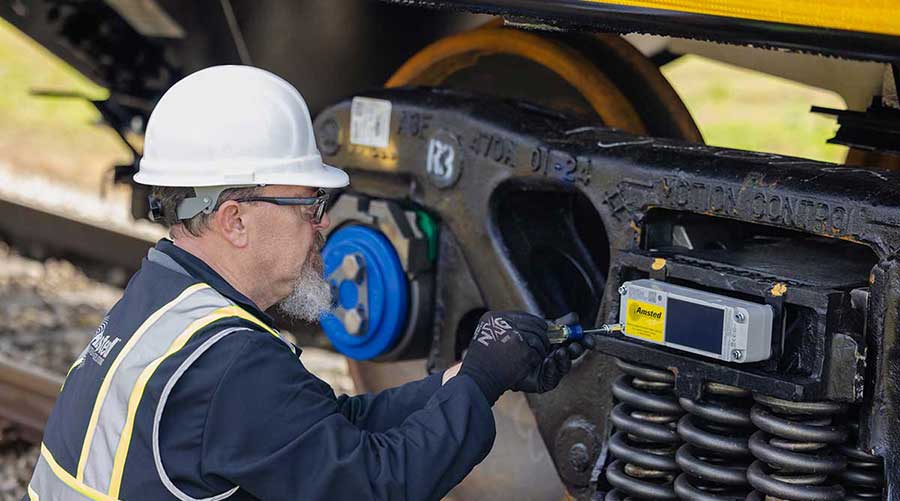Stay updated on news, articles and information for the rail industry
October 2016
Part 1 : Election 2016: What's at stake for rail?
Part 2 : APTA: Local elections put transit funding to the test
Part 3 : Industry stakeholders weigh in on regulation, free trade, transit funding and other potential election-impacted issues
Rail News: Short Lines & RegionalsIndustry stakeholders weigh in on regulation, free trade, transit funding and other potential election-impacted issues
Click on an individual's name to jump to his or her take on the 2016 elections:
Joe McHugh, Amtrak
Ed Hamberger, AAR
Chuck Baker, NRC
Lance Fritz, UP
Andy Kunz, U.S. HSR Association
Linda Darr, ASLRRA
Paul Lewis, Eno Center for Transportation
Madeline Janis, Jobs to Move America
U.S. Rep. Jeff Denham
Jim Mathews, National Association of Railroad Passengers
Elaine Nessle, CAGTC
John Risch, SMART
Joe McHugh, senior VP/governmental relations, Amtrak
How might the outcome of the national elections impact Amtrak? We try very hard to build relationships across the aisle. With regard to Congress, we got most of our big work done last year, when the FAST Act was passed, and this year has been spent implementing it. ... So, we really don't have any major legislative issues for Congress right now. And I don't expect to see us going up to Congress with a revised amount of issues.
With regard to the presidential election, we will be watching very closely how the Department of Transportation is shaped under either of the two candidates' administration. The secretary of transportation sits on the board of directors at Amtrak — they typically delegate that through the FRA administrator, so we'll see how that evolves during the next year or so. There could be some potential changes in that, but, largely, I think we've benefited over the years.
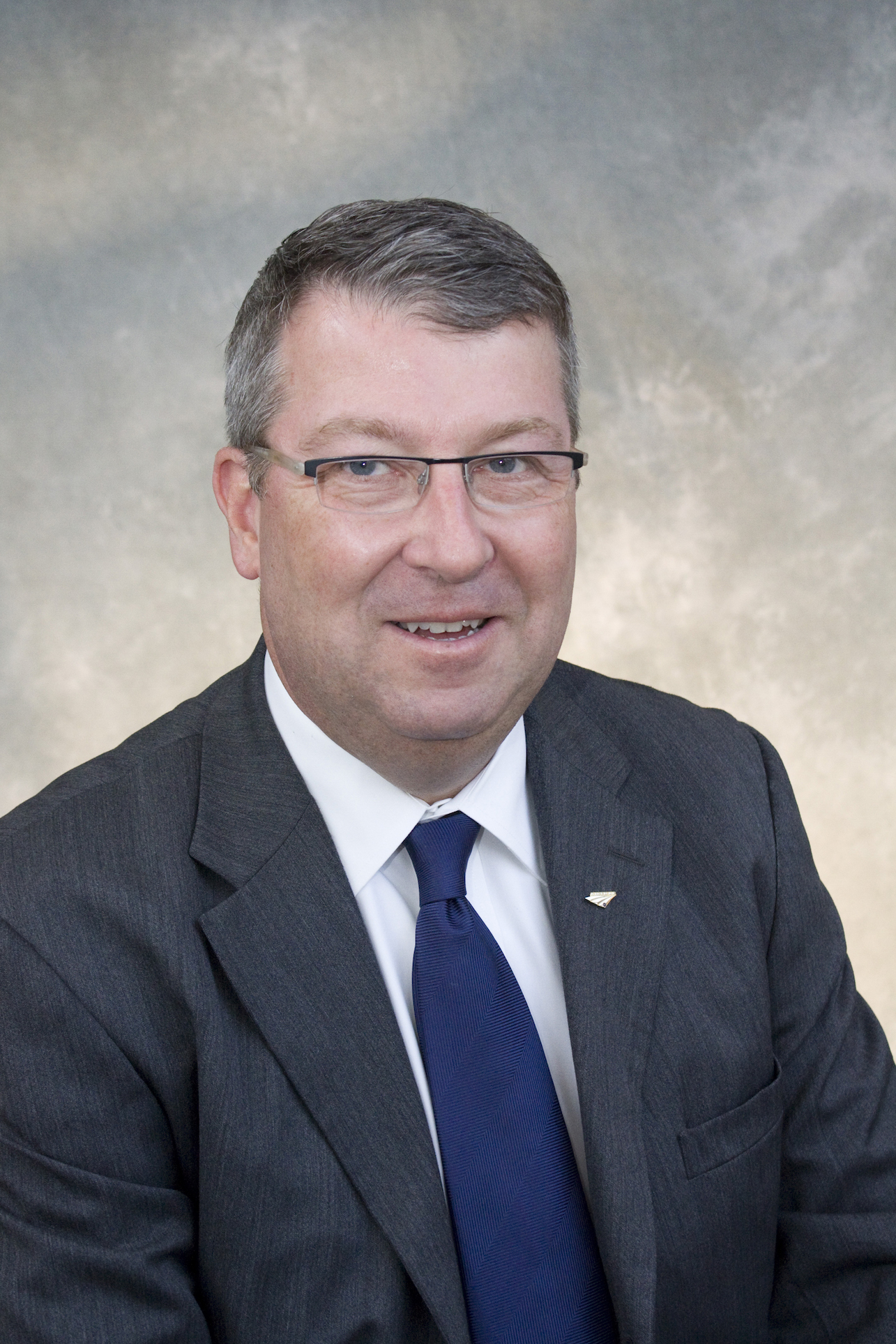
How might Amtrak benefit from a new president’s infrastructure investment program? Regardless of who’s elected, there will be at tremendous opportunity and push to invest in infrastructure, and I think that’s where we will have a chance to bring to the fore the things that we feel are essential to make our operation and what we do more healthy, and advance our mission. There was a lot of money at the beginning of the Obama administration eight years ago, and we put that ARRA [American Recovery and Reinvestment Act of 2009] money to good use. We bought a lot of new equipment and brought it into service; we got to a couple of big bridge projects done in New England that we hadn’t been able to get to [before the funding]. We did a good job of meeting the spirit and intent of what that stimulus funding was for.
We’ll have a similar list — we will be asked for it by the transition teams that get set up under the new administration and we will have that list ready to go.
The GOP platform calls for the federal government to allow private operators to provide passenger-rail service in the Northeast Corridor, for high-speed rail and for intercity passenger service across the county. What’s Amtrak's perspective on this? Remember that Amtrak was formed because the private railroads wanted to get out of the passenger business. Today, we don’t have anyone coming to us on a regular basis saying, ‘We want to run the trains.’ With regard to the privatizing the NEC, I don’t think anyone has put forward a plan that would speak to that point. I think the service we provide today — the Acela and soon the next-gen service in a few more years and regional and commuter services — offers a good portfolio to use.
I’m not sure what advantage you would get with the private operators. One thing that we’ve found is that the folks who’ve come to us in the past, the one common denominator tends to be that they don’t want to operate the trains; they see opportunities to leverage the assets. And I think we’re doing a good job of leveraging our assets, from the stations to infrastructure.
This election year has brought with it a lot of uncertainty. How does that uncertainty affect Amtrak’s planning and strategy? It won't. We feel we have a good plan and strategy, a good vision of what we want to do in the Northeast and the rest of the national system. We will take [that vision] to the new administration and to Congress, and we will continue to be accessible to them and open to their ideas. But by and large, we’re pretty confident about the direction in which we’re heading. We feel Amtrak should — and will — play a major role in the advancement the country makes in transportation.
Ed Hamberger, President and CEO, Association of American Railroads
How could the next administration and Congress improve the regulatory process? The freight-rail sector believes rules and regulations require thorough stakeholder input, including from industry, and that reviewing and improving the regulatory process would further extend the benefits of American industry to the larger economy. Meeting future demand for freight transportation and across the larger economy in all sectors requires smart public policies and balanced economic regulations. The freight-rail industry supports transparent and data-driven public policy that would ensure fairness and proper oversight.
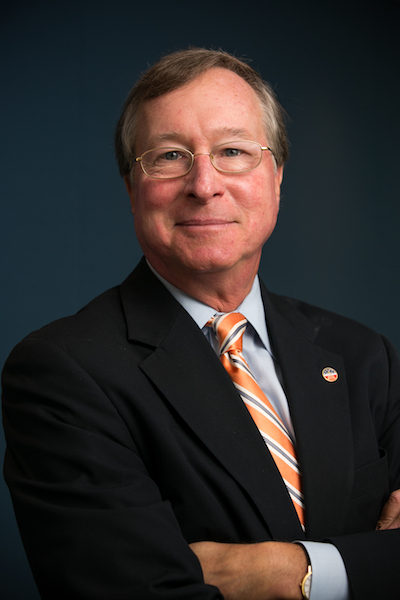 Ed Hamberger
Ed HambergerHow might they improve the economy? Despite undeniable recovery since the Great Recession, economists largely recognize that U.S. economic growth is less than ideal, which is why reinvigorating the economy and increasing American productivity has rightly been a focal point of [both] campaigns. From tax reform to smart regulations, ideas and discourse can only help in crafting policies that will increase GDP, wages and job growth.
Does the AAR have any macro policy recommendations for the next administration? Tax reform, such as a simpler and fairer tax code that reduces the corporate rate; regulatory improvement, involving policies that aren’t empirically driven, and a more transparent and collaborative policy process; infrastructure investment, namely instituting a system that would eliminate the practice of transferring money from the U.S. Treasury to the Highway Trust Fund and require highway users to pay for their fair use of road infrastructure; a comprehensive energy plan, one that embraces all forms of energy, including traditional (coal, ethanol, natural gas) and alternative (wind, solar) sources; and fair and open trade to help ensure current and future trade agreements are fair and support American workers.
Note: Answers derived from a letter Hamberger sent to both major presidential candidates on Aug. 26.
Chuck Baker, President, National Railroad Construction and Maintenance Association
What will be a key rail issue after the elections? Infrastructure spending. Both candidates have said they would increase it, but Clinton has been more specific about it. She said she would have a five-year, $275 billion program on top of the normal surface transportation bill and regular appropriation processes. Trump has said generally he would support new infrastructure investments, and that he’d double what Clinton proposes. The question for both is: Where does infrastructure investment fall as a priority? Clinton is not saying it’s No. 1. One would be optimistic it would be high on her list. With Trump, it’s hard to know if it’s a priority.
.jpg) Chuck Baker
Chuck BakerWhat might be the next administration’s priorities? With Trump, it could be deportations, a pro-life rule or a pullout of NATO. But I think his bombast is mostly for the campaign. With Clinton, will there be four more years of scandals? You wonder if there will be gridlock then for four years and how that would affect her priorities.
Any thoughts on the potential makeup of the next Congress? It appears it will stay Republican in House and the Senate is in play. Where the Senate flips is not necessarily meaningful. It appears infrastructure is a bi-partisan issue, for the most part. In terms of regulation, let’s wait and see, then make a case to whoever is there. For bigger and heavier trucks, Democrats mostly are against them and Republicans are a bit more split.
Is there a particular issue the NRC is keeping a close watch on? We’re thinking more about the huge state-of-good-repair needs of big transit-rail systems. They think how to solve it is with more money. The biggest seven have $50 billion in state-of-good-repair needs. But they don’t spend money as efficiently as they could. They use in-house MOW workers who are unionized and get $50 in pay and benefits per hour versus $30 per hour if they used contractors. Depending on the election, this issue could fall on an unreceptive audience. But we think they can run more efficiently. The NRC wants to get a bit louder on this issue.
Lance Fritz, Chairman, President and CEO, Union Pacific Railroad
What is an important issue the next administration and new Congress should address? Regardless of the election results in November, we have an opportunity to encourage our next president and other elected leaders to embrace free trade. It is one of the key drivers that can power the U.S. economy toward higher growth. For America’s economy to flourish, gross domestic product must grow by at least 3 percent, something achieved only three times since the turn of the century. Our country has been stuck in a low-growth rut for years, and I challenge our elected leaders to embrace free trade as a means of achieving this goal.
.jpg) Lance Fritz
Lance FritzThe U.S. is one of the world’s top exporters, producing goods in demand internationally, such as grain, aircrafts and auto parts. While many may not think of Union Pacific as an international company, almost 40 percent of our freight originates or terminates outside of the U.S. We carry export goods to the ports and haul items that Americans don’t make, but consume, such as clothes, televisions and automobiles.
Some are frustrated about jobs lost overseas. Much of the opposition is focused on the Trans-Pacific Partnership (TPP) among the U.S., Japan, Australia, Chile and eight other countries. I am not defending every provision of TPP; however, I support one of its core purposes, which eliminates tariffs, quotas and other trade barriers. An answer to providing opportunities for displaced workers is not pulling back on trade, but boosting their skill sets with training in emerging fields, such as technology.
Free trade isn’t a catch phrase to grab votes. It is essential for the U.S. economy and Union Pacific to thrive.
Andy Kunz, CEO, U.S. High-Speed Rail Association
Will transportation actually be a priority for whoever gets elected? In many respects, it’s going to have to become a priority if it hasn’t already due to the pressing need to fix our existing infrastructure. Plus, there are huge changes taking place in this country; rail ridership is in high demand, and a lot of our rail systems can’t meet that demand or expand fast enough. Both candidates are probably friendly to transportation, but in the end I think it’s really going to come down to all of us on the outside putting pressure on them. We’ve already been working behind the scenes with senators to promote better transportation policies. We can’t sit around and wait for a politician to lead the charge. In many cases, it’s difficult for them to do so.

Do you foresee either candidate putting high-speed rail on their agenda? I haven’t seen either of them talk about it as much as President Obama used to. I think they’re both pretty open to it. Of all the Republican candidates, Trump would probably be the most friendly to rail. Clinton is going to be under pressure to do something about a lot of problems, and high-speed rail can solve multiple issues at once. It’ll also be history in the making for a new president to come into office while a major high-speed rail project is under construction in America. That sort of changes the game and makes it more real. There are major billion-dollar contracts being let, so there’s a force behind this; there’s now some muscle behind high-speed rail to start advocating for more of it. That’s the good news that’s going to start changing the whole dynamic in this country.
Linda Darr, President, American Short Line and Regional Railroad Association
How might rail regulation be impacted by the national elections? The Obama administration was aggressive on exercising executive powers with added regulations. There has been an active period of proposed rulemakings. Will the next administration take any action to carry them forward? The Congressional Review Act of 1996 allows a surge of rules to be enacted at the end of a presidential term. The Obama administration could spit out rule after rule after rule. What does that mean for the proposed two-person crew rule, for example? Generally, Republicans are more opposed to regulations, especially when it comes to economic issues. But the Democrats are on our side with opposing truck size and weight issues.
What are the prospects for the Section 45G short-line tax credit, which expires again at 2016’s end, given the national elections? There’s still a chance something can get done with the tax credit in this Congress. Crazier things have happened in a lame duck session. With 45G, annual track investment has increased 128 percent. When the tax credit is in effect for a full year, tie orders increase by over 1 million, but when the credit lapses and is subsequently extended, this increase is only half as great. Without congressional action, that will happen next year.
How might the economy be impacted by the elections? International conditions won’t be better if there’s extreme turbulence in the U.S. or mistrust of the U.S. We don’t need more challenges with our international partners. On the domestic side, job growth, consumer spending and the housing market are good. We hope the next person in office sends signals that those things can continue to grow.
What are the possible implications to short lines regarding the next administration? There’s the question of which candidate is better for railroads. That has to play out. It depends on the issue. Either way it goes, we believe we will fare well based on the strength of our story as small businesses. We won’t see either one necessarily take us in another direction.
Paul Lewis, Vice President of Policy and Finance, Eno Center for Transportation
What are some major freight-rail policy issues the next administration will need to address? Over the past eight years, Congress and the Obama Administration have made substantial progress on federal freight policy. The next administration will inherit this and will be tasked with sustaining it and ensuring its success. And even though the establishment of an official federal freight policy was a major step forward, there are still many improvements to be made.

A few components of the new federal freight program stand out. The TIGER discretionary grant program, created in 2009 under the Recovery Act, has distributed hundreds of millions of dollars to freight projects across the country. In 2012, MAP-21 established a National Freight Advisory Committee, which established the basis for freight planning and began the process to outline federal freight performance metrics. Then in 2015, the FAST Act established a discretionary grant program that focused solely on freight. The resulting FASTLANE grant program is funded with more than $800 million per year through 2020.
The next administration has the opportunity to elevate these programs and make significant enhancements. First, FASTLANE grants currently are limited to highway freight projects, with a small set aside for intermodal proposals. Instead, the program eligibility needs to be mode-neutral, and expanded to include ports, railroads, and waterways as well. Establishing freight performance metrics that evaluate the reliability and efficiency of goods movement, regardless of mode, can be a great way to transparently and fairly evaluate project proposals and target FASTLANE funding to the most valuable ventures.
The next priority is to boost the funding for the freight components of TIGER and FASTLANE programs and to ensure their long-term financial sustainability. While creating both grant programs has been a step in the right direction, they are significantly oversubscribed, and research has demonstrated significant demand for this type of targeted, competitive resources.
Madeline Janis, executive director, Jobs to Move America
[Editor’s note: Jobs to Move America is is a national nonprofit organization dedicated to ensuring that public dollars spent on public transit systems create good jobs, cleaner equipment and more opportunity for low income people. The organization has developed a “U.S. Employment Plan” that encourages rail and bus manufacturers to create good, American jobs when they receive multimillion-dollar contracts paid for with taxpayer funds.]
 Madeline Janis
Madeline JanisWhat might this year’s elections mean for the passenger-rail industry? We are very excited and optimistic about the impact of this November election on passenger rail, and all the community and job-creation benefits that come from strengthening an expansion of passenger rail. The local ballot initiatives add up to around $200 billion, and if you think about the FAST Act being worth about $350 billion over the next five years, it’s such a substantial infusion of money and resources into our system that it can only have a really positive impact, assuming that the ballot measures pass.
Both presidential candidates have talked about their plans to invest billions in infrastructure. What would that add to the mix? The money would be a great opportunity all around, assuming Congress goes along with proposals for infrastructure investment. But where we have some concerns, and where we feel there needs to be pointed and significant emphasis, is on the double and triple bottom-line potential of transportation and passenger rail investment. In other words, if there’s no real emphasis on equity and economic opportunity then it would be an enormous opportunity lost. Our strongest message is that it could be an incredible opportunity for the American economy and transportation system, or it could be a one-time spurt of funding that ends up benefiting the very rich.
What do you think of GOP platform proposal to eliminate the Mass Transit Account from the federal Highway Trust Fund? It’s a crazy, insane idea. We need mass transit to make our cities better, to make life better for people who can’t afford cars or who don’t want to continue to drive in traffic. Public transit has triple bottom-line benefits.
U.S. Rep. Jeff Denham, chair, House Railroads, Pipelines and Hazardous Materials Subcommittee
[Editor’s note: U.S. Rep. Jeff Denham, who is up for re-election on Nov. 8, held a question-and-answer session in September with rail industry trade publications, including Progressive Railroading.]
Both presidential candidates have called for greater investment in transportation infrastructure, and there are many local initiatives on the November ballots calling for increased funding for transit rail. What do you think is at stake for the rail industry this November? There is a lot of good news out there. A number of local transit and commuter-rail projects have improved their track record, which I think will help convince voters that there are opportunities to expand and add ridership. And, the two presidential candidates have both talked about infrastructure investment and improvement. I think there’s going to be great opportunity to see local match on some of these projects, as well as finding ways for federal funding to complete a lot of these projects.
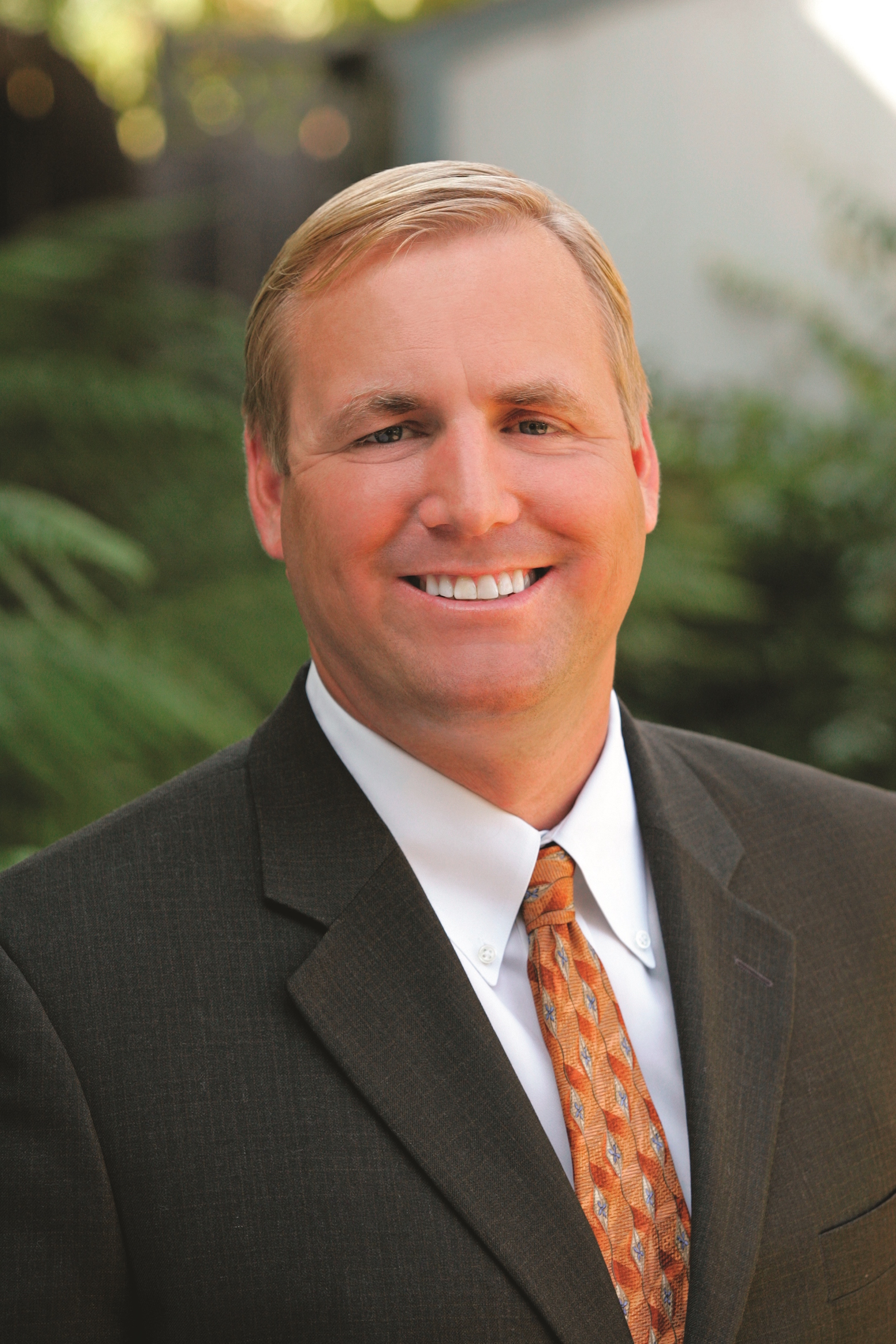 U.S. Rep. Jeff Denham
U.S. Rep. Jeff DenhamIs there any chance to have a separate trust fund that would benefit passenger rail? We will look at all types of funding scenarios to fulfill the obligation under the FAST Act. I would say that everything is on the table.
Where do you see the TIGER grant program going from here? I think it’s hard to define the future of TIGER grants until the new administration is in place. They may have another idea on a new type of funding, but I think there will be a commitment for some type of competitive grant proposal.
Do you believe the growth of U.S. high-speed rail should involve investment from the federal government, or should it be funded only by the private sector, such as the projects in Florida and Texas? Whether it’s a public-private partnership, or completely done with private funds, or done with government grants and loans, I think there will be a combination [of funding mechanisms] to move this country forward with high-speed rail. But, ultimately, you have to have a mixture of those scenarios to show that a project is fully funded before you can obligate the taxpayers.
Jim Mathews, CEO, National Association of Railroad Passengers
What’s at stake for passenger rail in the upcoming election? To the extent that infrastructure has been covered by the presidential candidates, there seems to be broad consensus that the U.S. is not spending enough, and that this needs to be remedied immediately. There have also been positive indicators regarding the passenger rail sector, specifically.

We know that Hillary Clinton has made a $275 billion, five-year plan a key part of her blueprint for the first 100 days of a potential Clinton administration. We’re pleased that her campaign explicitly acknowledged the pressing realities: More and more Americans are traveling via train, much of our passenger-rail infrastructure is crumbling, and we need to invest to meet rapidly growing demand and build a more mobile America. Mr. Trump has said he’d double Secretary Clinton’s infrastructure investment, which (when you include her infrastructure bank proposal) comes to somewhere between $800 billion and a trillion dollars in funding. He has also gone on record saying that the U.S. is falling behind the rest of the world on high-speed rail, contrasting the U.S. system with China’s high-speed rail network, and he says he will close that gap. Beyond that, Trump has offered few specifics, and his recently released tax plan raises serious questions. He has promised a 1 percent-per-year spending cut to the non-defense, non-safety net parts of the discretionary budget—while exempting Social Security, Medicare, and Medicaid. This would necessitate deep cuts in infrastructure investment.
Neither candidate has addressed the really big issue facing transportation: How do you pay for the dramatic ramp-up in investment required by our aging infrastructure? Presumably, a one-time stimulus could be funded by tax reform, an idea that has prominent advocates among both Republican and Democratic camps. But what is needed, beyond that, is a sustainable dedicated source of funding. That’s especially true for passenger rail, which doesn’t even have the (somewhat dubious) benefit of a failing trust fund, and is forced to scrap in the appropriations process every year.
This is why I find the battle in Congress much more compelling. As a 501(c)3, NARP can neither endorse candidates nor get involved in specific races. I can say, however, that during the past two or three years passenger train advocates have made a historic progress in securing bipartisan recognition of the need to address the passenger rail infrastructure crisis. It was hard won, and came on top of a lot of failure. But when you look at the 2015’s FAST Act, you see a practical, bipartisan plan to ramp up investment in rail. In the Senate you had a Republican from Mississippi, Sen. Roger Wicker, teaming up with a Democrat from New Jersey, Sen. Cory Booker, to work out a consensus on passenger trains. And that bill was guided through passage by Chairman John Thune, a Republican from South Dakota—a state with no passenger rail service. That really is amazing progress!
However, there is a real danger of backsliding. Our members are concerned about this year’s Republican Party platform statement, which falls back into the habit of reflexively attacking Amtrak, labels California’s high-speed rail system a “boondoggle,” and hand-waves away hard questions about rail infrastructure investment with vague appeals to the private sector. The statement also proposes to shore up the transportation trust fund by eliminating the mass transit account. This is bad policy; Congress has transferred roughly $130 billion in general funds to keep the trust fund solvent since 2008, and the Congressional Budget Office projects a deficit of $18 billion per year from 2021 through 2026; cutting mass transit funding will erode support for the program without materially addressing the deficit. It also hurts working Americans, who use public transportation 35 million times each and every weekday.
We need to make sure these disastrous policy proposals don’t take root among rank-and-file Republicans, disrupting the bipartisan consensus that has been growing around multimodal transportation investment. Towards that end, we’re making sure that all candidates for Congress—whether Republican, Democrat, Libertarian, or Green—hear from passengers, transit riders, drivers, and commuters of all stripes that the status quo just isn’t working.
Beyond funding, we will also be closely tracking litigation that could affect passengers’ right to quality, on-time train service. There are ongoing cases between the Association of American Railroads and the U.S. Department of Transportation, and the AAR and the Surface Transportation Board that could dramatically impair the ability of Amtrak to get people to their destination on time. While we can only speculate at the outcome of those cases, there are simple legislative fixes at our disposal, and we are ready to pursue them in the 115th Congress in necessary.
Elaine Nessle, Executive Director, Coalition for America’s Gateways and Trade Corridors
Are there any issues you wish the candidates would address specifically? For nearly 10 years, our country has been focused on economic recovery, and that topic has been prevalent on the campaign trail. One recovery strategy would boast an all-around win: federal investment in goods-moving infrastructure. A more efficient and reliable freight network reduces the cost of doing business here, supporting existing goods production and services while attracting new. Our largest trading partners and competitors are employing this very strategy, investing at twice to five times the rate we are. Unique from other types of transportation spending, investment in freight infrastructure is an economic multiplier, yielding very high returns that include both short and long term jobs.

On the topic of Congress: What might a change in congressional majority mean for rail? For transportation broadly? Historically, transportation has been a bipartisan priority. Although it seems Republicans and Democrats agree on nothing these days, you only need to look to passage of the FAST Act surface transportation law in December of 2015 for proof of commonality. Passed by a Republican-controlled Congress, the law contains many priorities that were in the Democratic administration’s surface transportation proposal, the Grow America Act. Of note, both proposals contained a freight-focused multimodal competitive grant program with merit-based criteria for large projects and a freight formula program for smaller-scale needs.
Anything else your organization is concerned about in the coming elections? Commendably, both candidates have called for a transportation infrastructure investment campaign immediately upon taking office. It is encouraging to know that both Mr. Trump and Secretary Clinton recognize the urgency of our nation’s investment needs. Current investment programs are oversubscribed, leaving nationally and regionally important projects to wait indefinitely for federal support. While an immediate investment program is a wonderful start, a sustained investment campaign is needed to carry our transportation systems forward, and that program must increase the amount dedicated to our goods movement system. It is time to recognize and prioritize the multimodal freight network that moves our economy and delivers wealth.
John Risch, National Legislative Director, SMART Transportation Division
Are there any issues you wish that the candidates would address specifically?
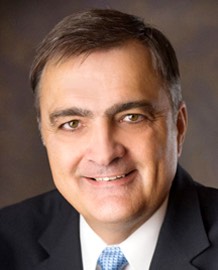
We want the next administration to look at rail as a priority in developing transportation policy. Rail is more fuel efficient, better for the environment and relieves highway congestion. Rail also can play a really big part in addressing America’s transportation needs. We have a lot of members who are furloughed because of a dip in rail traffic. We will be working with the next administration as we have in the current one to create more jobs in our industry — whether it be supporting TIGER grants, funding for passenger rail, or the development of additional West Coast ports. Our members want to work and government policy can help. We are very concerned about a potential Trump presidency for a host of reasons, not the least of which is his inability to take sound advice and his complete inexperience on rail and just about every other issue.
Keywords
Browse articles on Amtrak Association of American Railroads National Railroad Construction and Maintenance Association Union Pacific Railroad American Short Line and Regional Railroad Association U.S. High-Speed Rail Association National Association of Railroad Passengers Jobs to Move America Eno Center for Transportation SMART Transportation Division CAGTCContact Progressive Railroading editorial staff.


 2025 MOW Spending Report: Passenger-rail programs
2025 MOW Spending Report: Passenger-rail programs
 Gardner steps down as Amtrak CEO
Gardner steps down as Amtrak CEO
 Guest comment: Oliver Wyman’s David Hunt
Guest comment: Oliver Wyman’s David Hunt
 Women of Influence in Rail eBook
Women of Influence in Rail eBook
 railPrime
railPrime





